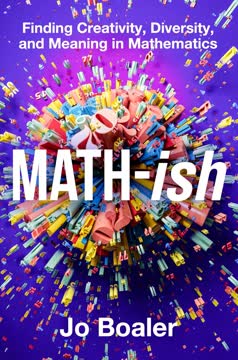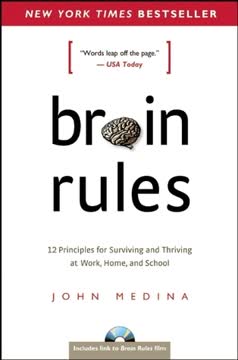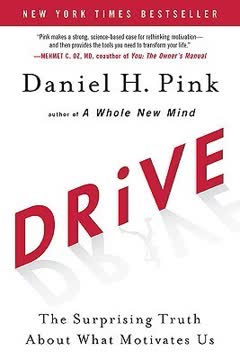نکات کلیدی
1. اثر چندبرابری: آزادسازی هوش در سازمانها
چندبرابرکنندهها 2.3 برابر بیشتر از افراد خود بهرهبرداری میکنند.
چندبرابرکنندهها در مقابل کاهشدهندهها. چندبرابرکنندهها رهبرانی هستند که از هوش خود برای تقویت هوش و قابلیتهای افراد اطرافشان استفاده میکنند، در حالی که کاهشدهندهها هوش و قابلیت را از تیمهایشان میگیرند. چندبرابرکنندهها با پنج انضباط کلیدی عمل میکنند:
- یابنده استعداد
- آزادکننده
- به چالش کشنده
- سازنده جامعه
- سرمایهگذار
با پذیرش این انضباطها، رهبران میتوانند محیطهایی ایجاد کنند که در آن افراد بهترین تفکر و کار خود را ارائه دهند. این رویکرد نه تنها پتانسیل فردی را به حداکثر میرساند، بلکه به نتایج بهتر سازمانی منجر میشود، زیرا افراد بیشتر درگیر، نوآور و مولد هستند.
2. یابندگان استعداد: کشف و پرورش پتانسیل پنهان
نبوغ ذاتی چیزی است که افراد نه تنها بهطور استثنایی انجام میدهند، بلکه بهطور کاملاً طبیعی انجام میدهند.
شناسایی و پرورش استعداد. یابندگان استعداد چشمی تیزبین برای شناسایی نقاط قوت و تواناییهای منحصر به فرد افراد دارند و اغلب پتانسیلی را میبینند که خود افراد ممکن است آن را تشخیص ندهند. آنها:
- به دنبال اشکال متنوع هوش میگردند
- "نبوغ ذاتی" افراد را شناسایی و برچسبگذاری میکنند
- فرصتهایی برای افراد ایجاد میکنند تا در بالاترین نقطه مشارکت خود کار کنند
با شناسایی و پرورش استعداد، یابندگان استعداد چرخهای از رشد و جذب ایجاد میکنند که در آن عملکردهای برتر توسعه مییابند و استعدادهای جدید به سازمان جذب میشوند.
3. آزادکنندگان: ایجاد محیطهای شدید برای بهترین تفکر
وقتی لحظهی یورکا را از کسی میگیرید، فرصت هیجانزده شدن و برتری را از او میگیرید.
پرورش آزادی فکری. آزادکنندگان فضاهایی ایجاد میکنند که در آن افراد احساس امنیت میکنند تا با دلیل فکر کنند، صحبت کنند و عمل کنند. آنها این کار را با:
- ارائه انتخاب و فضا برای مشارکت دیگران
- درخواست بهترین کار از افراد
- ایجاد چرخههای سریع یادگیری
این رویکرد محیطی شدید (اما نه تنشزا) ایجاد میکند که در آن افراد تشویق میشوند تا ریسک کنند، از اشتباهات بیاموزند و بهترین تلاش خود را ارائه دهند. آزادکنندگان درک میکنند که با ایجاد جوی از امنیت و انتظارات بالا، میتوانند پتانسیل کامل تیمهای خود را آزاد کنند.
4. به چالش کشندگان: فراتر از مناطق راحتی برای دستیابی به بیشتر
بحث تکنیکی برای سرعت و تقویت تیمها است.
گسترش قابلیتها. به چالش کشندگان افراد و سازمانها را فراتر از محدودیتهای فعلیشان میبرند با:
- پرسیدن سوالات تحریکآمیز برای هدایت کشف
- ارائه چالشهای مشخص
- ایجاد باور به آنچه ممکن است
آنها درک میکنند که رشد زمانی اتفاق میافتد که افراد فراتر از مناطق راحتی خود کشیده شوند. با چارچوببندی چالشها به عنوان معماهای جذاب و پرورش باور به توانایی تیم برای غلبه بر آنها، به چالش کشندگان محیطهایی ایجاد میکنند که در آن نوآوری شکوفا میشود و افراد به طور مداوم از انتظارات فراتر میروند.
5. سازندگان جامعه: پرورش هوش جمعی از طریق بحث
وقتی افراد میتوانند به یک فرآیند نگاه کنند، نه تنها آن را درک میکنند، بلکه به آن اعتماد میکنند.
بهرهبرداری از خرد جمعی. سازندگان جامعه محیطهایی ایجاد میکنند که در آن دیدگاههای متنوع ارزشمند هستند و بحثهای دقیق تشویق میشوند. آنها:
- مسائل را به وضوح چارچوببندی میکنند
- بحثهای سازنده را جرقه میزنند و تسهیل میکنند
- فرآیندهای تصمیمگیری شفاف را هدایت میکنند
این رویکرد به تصمیمات بهتری منجر میشود که توسط کل سازمان درک و به طور مؤثر اجرا میشوند. با درگیر کردن افراد در فرآیند تصمیمگیری، سازندگان جامعه نه تنها به هوش جمعی تیمهای خود دست مییابند، بلکه اعتماد و تعهد به نتایج را نیز ایجاد میکنند.
6. سرمایهگذاران: القای مالکیت و مسئولیتپذیری
وقتی رهبران قلم را برمیگردانند، مسئولیت عمل را در جایی که باید، تثبیت میکنند.
توانمندسازی از طریق مسئولیت. سرمایهگذاران قابلیتهای افراد را توسعه میدهند با:
- دادن مالکیت واضح وظایف و نتایج به دیگران
- ارائه منابع و حمایتهای لازم
- نگه داشتن افراد در قبال نتایج
این رویکرد حس مالکیت و مسئولیتپذیری را در میان اعضای تیم ایجاد میکند، که به سطوح بالاتری از درگیری و عملکرد منجر میشود. سرمایهگذاران درک میکنند که با اعتماد به افراد برای کارهای مهم و حمایت از موفقیت آنها، میتوانند سازمانی توانمندتر و خودکفاتر بسازند.
7. کاهشدهندگان تصادفی: شناسایی و غلبه بر محدودیتهای ناخواسته
با وجود بهترین تلاشهای ما برای رهبرانی کامل بودن، اکثر ما در جایی بین چندبرابرکننده شگفتانگیز و کاهشدهنده وحشتناک قرار داریم.
عواقب ناخواسته نیتهای خوب. بسیاری از رهبران با نیت خوب به طور ناخواسته قابلیتهای اطرافیان خود را کاهش میدهند. تمایلات رایج کاهشدهنده تصادفی شامل موارد زیر است:
- مرد ایده: غرق کردن دیگران با ایدههای بیش از حد
- همیشه روشن: تسلط بر مکالمات و تعاملات
- نجاتدهنده: سریعاً به حل مشکلات پرداختن
- تعیینکننده سرعت: تعیین سرعتی که دیگران نمیتوانند حفظ کنند
- پاسخدهنده سریع: تصمیمگیری بیش از حد سریع
شناسایی این تمایلات اولین گام در غلبه بر آنها است. رهبران میتوانند آگاهانه شیوههای چندبرابرکننده را بپذیرند تا پتانسیل کامل تیمهای خود را آزاد کنند.
8. تبدیل شدن به یک چندبرابرکننده: استراتژیهایی برای رشد شخصی و سازمانی
رهبری مانند یک چندبرابرکننده انتخابی است که روزانه یا شاید در هر لحظه با آن مواجه میشویم.
تغییر رویکرد رهبری. برای تبدیل شدن به یک چندبرابرکننده، رهبران میتوانند:
- بازخوردی درباره سبک رهبری فعلی خود دریافت کنند
- تمرکز واحدی برای بهبود تعیین کنند
- چرخه موفقیت از طریق آزمایشهای کوچک ایجاد کنند
- شبکه یادگیری چندبرابرکنندهها برای حمایت و رشد بسازند
سازمانها میتوانند رهبری چندبرابرکننده را با:
- معرفی مفاهیم چندبرابرکننده در سراسر سازمان
- اجرای برنامههای آزمایشی برای ایجاد داستانهای موفقیت
- زنده نگه داشتن گفتگو از طریق بحثها و کاربردهای منظم
- ایجاد شبکههای یادگیری برای به اشتراکگذاری تجربیات و بهترین شیوهها
با پذیرش آگاهانه شیوههای چندبرابرکننده، رهبران و سازمانها میتوانند محیطهایی ایجاد کنند که در آن هوش و قابلیت شکوفا شود، که به نتایج بهتر و تجربیات کاری رضایتبخشتر برای همه منجر میشود.
آخرین بهروزرسانی::
FAQ
What's "The Multiplier Effect: Tapping the Genius Inside Our Schools" about?
- Overview: "The Multiplier Effect" by Liz Wiseman, Lois Allen, and Elise Foster explores how educational leaders can amplify the intelligence and capabilities of their teams.
- Core Concept: The book introduces the concept of "Multipliers," leaders who bring out the best in others, and contrasts them with "Diminishers," who unintentionally stifle potential.
- Application in Education: It provides strategies for educators to become Multipliers, thereby transforming schools into environments where both teachers and students thrive.
- Research-Based: The book is grounded in research involving over 400 educational leaders, offering data-driven insights and practical applications.
Why should I read "The Multiplier Effect"?
- Leadership Development: It offers valuable insights for educational leaders looking to enhance their leadership skills and foster a more productive school environment.
- Practical Strategies: The book provides actionable strategies and experiments that can be implemented in educational settings to improve outcomes.
- Research-Backed: With a foundation in extensive research, the book provides credible and tested methods for leadership improvement.
- Broader Impact: Beyond education, the principles can be applied to any leadership role, making it a versatile resource for personal and professional growth.
What are the key takeaways of "The Multiplier Effect"?
- Multiplier vs. Diminisher: Understanding the difference between leaders who amplify intelligence and those who inadvertently suppress it is crucial.
- Five Disciplines: The book outlines five key disciplines of Multipliers: Talent Finder, Liberator, Challenger, Community Builder, and Investor.
- Accidental Diminisher: Many leaders unintentionally diminish their team's potential; recognizing and addressing these tendencies is essential.
- Practical Experiments: The book offers specific experiments and strategies to help leaders transition from Diminisher to Multiplier.
What are the best quotes from "The Multiplier Effect" and what do they mean?
- "If your actions inspire others to dream more, learn more, do more, and become more, you are a leader." - This quote emphasizes the essence of leadership as enabling others to reach their full potential.
- "People are smart and will figure it out." - This reflects the Multiplier mindset, which trusts in the capabilities of others and encourages autonomy.
- "The critical skill of this century will not be what you know but rather how quickly and how deeply you can tap into what the people around you know." - It highlights the importance of leveraging collective intelligence in modern leadership.
How does "The Multiplier Effect" define a Multiplier?
- Genius Maker: A Multiplier is a leader who amplifies the intelligence and capabilities of those around them, making everyone smarter and more effective.
- Five Disciplines: They practice five key disciplines: Talent Finder, Liberator, Challenger, Community Builder, and Investor, each focusing on different aspects of leadership.
- Mindset: Multipliers operate with the belief that people are smart and capable, and they focus on extracting and extending the genius of others.
- Impact: They create environments where ideas thrive, and people are encouraged to contribute their best thinking and work.
What is an Accidental Diminisher according to "The Multiplier Effect"?
- Unintentional Impact: An Accidental Diminisher is a well-intentioned leader who inadvertently stifles the intelligence and capabilities of their team.
- Common Tendencies: These leaders often exhibit behaviors such as being "Always On," "Rescuer," or "Pacesetter," which can suppress others' contributions.
- Self-Awareness: Recognizing these tendencies is the first step toward becoming a Multiplier, as it allows leaders to adjust their behaviors.
- Practical Solutions: The book provides strategies and experiments to help leaders identify and mitigate their diminishing tendencies.
How can educators apply the principles of "The Multiplier Effect"?
- Classroom Leadership: Teachers can use the Multiplier principles to create a classroom environment that encourages student participation and critical thinking.
- School Administration: School leaders can implement the five disciplines to foster a culture of collaboration and innovation among staff.
- Professional Development: Educators can engage in the book's experiments to develop their leadership skills and enhance their impact.
- Community Building: By adopting a Multiplier mindset, educators can build stronger relationships with students, parents, and colleagues.
What are the five disciplines of a Multiplier in "The Multiplier Effect"?
- Talent Finder: Identifies and utilizes the unique genius of each team member, fostering growth and loyalty.
- Liberator: Creates an intense environment that encourages people to think for themselves and do their best work.
- Challenger: Pushes the team beyond their current capabilities by asking provocative questions and setting ambitious goals.
- Community Builder: Engages the team in debate and decision-making, ensuring transparency and collective buy-in.
- Investor: Gives others ownership and accountability, providing support and resources to ensure success.
How does "The Multiplier Effect" suggest leaders handle decision-making?
- Engage the Team: Multipliers involve their team in the decision-making process, encouraging debate and diverse perspectives.
- Frame the Issue: Clearly define the question, rationale, and process to ensure everyone understands the decision's context.
- Spark Debate: Create a safe environment for rigorous debate, challenging assumptions and exploring all options.
- Drive Transparency: Ensure the decision-making process is open and transparent, fostering trust and commitment.
What role does feedback play in "The Multiplier Effect"?
- Self-Assessment: Leaders are encouraged to seek feedback to identify their Accidental Diminisher tendencies and areas for improvement.
- 360-Degree Feedback: The book suggests using formal assessments to gain a comprehensive view of one's leadership impact.
- Continuous Improvement: Feedback is seen as a tool for ongoing development, helping leaders refine their approach and become more effective.
- Open Dialogue: Encouraging open communication with colleagues and team members can provide valuable insights and foster a culture of growth.
How can leaders transition from Diminisher to Multiplier according to "The Multiplier Effect"?
- Recognize Tendencies: Identify and acknowledge any Accidental Diminisher behaviors that may be limiting team potential.
- Adopt Multiplier Practices: Implement the five disciplines of Multipliers to create a more empowering and productive environment.
- Experiment and Adjust: Use the book's experiments to test new approaches and refine leadership skills.
- Seek Support: Engage with a learning network or seek feedback from peers to support the transition and maintain accountability.
What impact can "The Multiplier Effect" have on educational institutions?
- Enhanced Collaboration: By adopting Multiplier principles, schools can foster a culture of collaboration and shared leadership.
- Improved Outcomes: Empowering educators and students to contribute their best can lead to improved academic and organizational outcomes.
- Sustainable Change: The book provides a framework for sustainable leadership development, ensuring long-term success and growth.
- Community Engagement: Engaging the broader school community in decision-making and problem-solving can strengthen relationships and support.
نقد و بررسی
کتاب اثر مضاعف عمدتاً نظرات مثبتی را دریافت کرده است و خوانندگان از بینشهای آن در زمینه رهبری مؤثر و حداکثر کردن پتانسیل تیمها قدردانی میکنند. بسیاری از افراد چارچوب کتاب برای تبدیل شدن به یک "مضاعف" را مفید میدانند و بر تمرکز آن بر استفاده از استعدادهای دیگران، ایجاد محیطهای چالشبرانگیز و پرورش جامعه تأکید میکنند. برخی از خوانندگان به تکراری بودن محتوای کتاب و مثالهای قطبیکننده آن به عنوان نقاط ضعف اشاره میکنند. بهطور کلی، این کتاب برای معلمان و رهبرانی که به دنبال بهبود مهارتهای مدیریتی و فرهنگ سازمانی خود هستند، ارزشمند تلقی میشود.
Similar Books
















